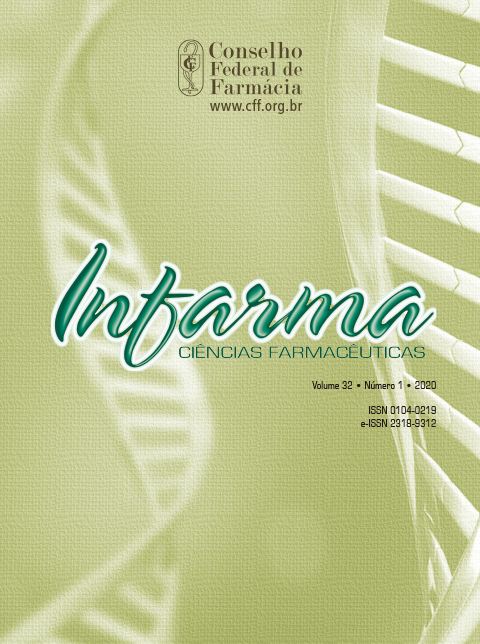DESENVOLVIMENTO E AVALIAÇÃO DE HIDROGEIS DE CARBOXIMETILCELULOSE PARA O TRATAMENTO DE FERIDAS
DOI:
https://doi.org/10.14450/2318-9312.v32.e1.a2020.pp41-55Palavras-chave:
Feridas, Hidrogel, CarboximetilceluloseResumo
As feridas crônicas são um problema de saúde pública, uma vez que o retardo no processo de cicatrização aumenta os custos da assistência da saúde. O hidrogel de carboximetilcelulose (CMC) é um sistema disperso, semissólido, formado por CMC disperso em um veículo aquoso, muito utilizado no tratamento de feridas, pois estimula o desbridamento autolítico. O objetivo do trabalho foi desenvolver e caracterizar hidrogeis de CMC, variando as concentrações de CMC em 2%, 3,5% ou 5% p/v e as concentrações e o tipo de agente umectante, como glicerina ou propilenoglicol em 10%, 15% e 20% p/v. Foram avaliadas as características organolépticas e físico‑químicas, pH, oclusividade, espalhabilidade e reologia das formulações. Todas as formulações apresentaram pH em torno de 7,0. Os geis com maior espalhabilidade foram os aqueles com 2% de CMC e 10% de glicerina e propilenoglicol. Nas análises reológicas, os maiores valores de viscosidade foram apresentados pelas formulações contendo propilenoglicol. A viscosidade aumentou com o aumento da concentração de CMC, assim como a tensão de cisalhamento. As formulações contendo glicerina apresentaram maior proximidade entre os valores dos módulos de armazenamento (G’) e de perda (G’’). A única formulação que apresentou ponto de cedência foi o gel de CMC a 5% com 20% de glicerina. Dessa forma, foi possível desenvolver e avaliar hidrogeis de CMC para o tratamento de feridas.
Downloads
Publicado
Como Citar
Edição
Seção
Licença
Autores que publicam nesta revista concordam com os seguintes termos:- Autores mantém os direitos autorais e concedem à revista o direito de primeira publicação, com o trabalho simultaneamente licenciado sob a Licença Creative Commons by NC ND que permite o compartilhamento do trabalho com reconhecimento da autoria e publicação inicial nesta revista.
- Autores têm autorização para assumir contratos adicionais separadamente, para distribuição não-exclusiva da versão do trabalho publicada nesta revista (ex.: publicar em repositório institucional ou como capítulo de livro), com reconhecimento de autoria e publicação inicial nesta revista.
- Autores têm permissão e são estimulados a publicar e distribuir seu trabalho online (ex.: em repositórios institucionais ou na sua página pessoal) a qualquer ponto antes ou durante o processo editorial, já que isso pode gerar alterações produtivas, bem como aumentar o impacto e a citação do trabalho publicado (Veja O Efeito do Acesso Livre).


